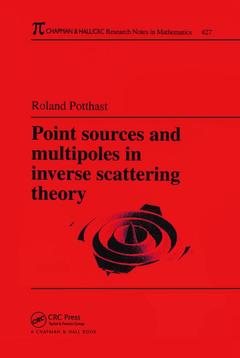Point Sources and Multipoles in Inverse Scattering Theory Chapman & Hall/CRC Research Notes in Mathematics Series
Auteur : Potthast Roland

Over the last twenty years, the growing availability of computing power has had an enormous impact on the classical fields of direct and inverse scattering. The study of inverse scattering, in particular, has developed rapidly with the ability to perform computational simulations of scattering processes and led to remarkable advances in a range of applications, from medical imaging and radar to remote sensing and seismic exploration.
Point Sources and Multipoles in Inverse Scattering Theory provides a survey of recent developments in inverse acoustic and electromagnetic scattering theory. Focusing on methods developed over the last six years by Colton, Kirsch, and the author, this treatment uses point sources combined with several far-reaching techniques to obtain qualitative reconstruction methods. The author addresses questions of uniqueness, stability, and reconstructions for both two-and three-dimensional problems.
With interest in extracting information about an object through scattered waves at an all-time high, Point Sources and Multipoles in Inverse Scattering Theory provides a valuable source of information from both the mathematical and applications perspectives. It offers insight into the general recovery of information from incomplete data and has direct, practical relevance to work on image reconstruction.
Date de parution : 06-2018
15.6x23.4 cm
Date de parution : 05-2001
Ouvrage de 256 p.
15.6x23.4 cm
Thèmes de Point Sources and Multipoles in Inverse Scattering Theory :
Mots-clés :
Eld Patterns; eld; Scattered Eld; pattern; Point Source Method; operator; Penetrable Scatterers; exterior; Herglotz Wave Function; dirichlet; Hausdor Distance; problem; Inverse Scattering Problems; unknown; Exterior Dirichlet Problem; scatterer; Single Layer Potential; closed; Electromagnetic Scattering; graph; Regularization Parameter; Incident Plane Waves; Minimum Norm Solution; Nite Data; Plane Waves; Interior Dirichlet Problem; Spherical Harmonics; Inhomogeneous Medium; Unknown Scatterer; Linear Sampling Method; Compact Linear Operator; Inverse Scattering; Jj Jj; Boundary Values; Newton Scheme
